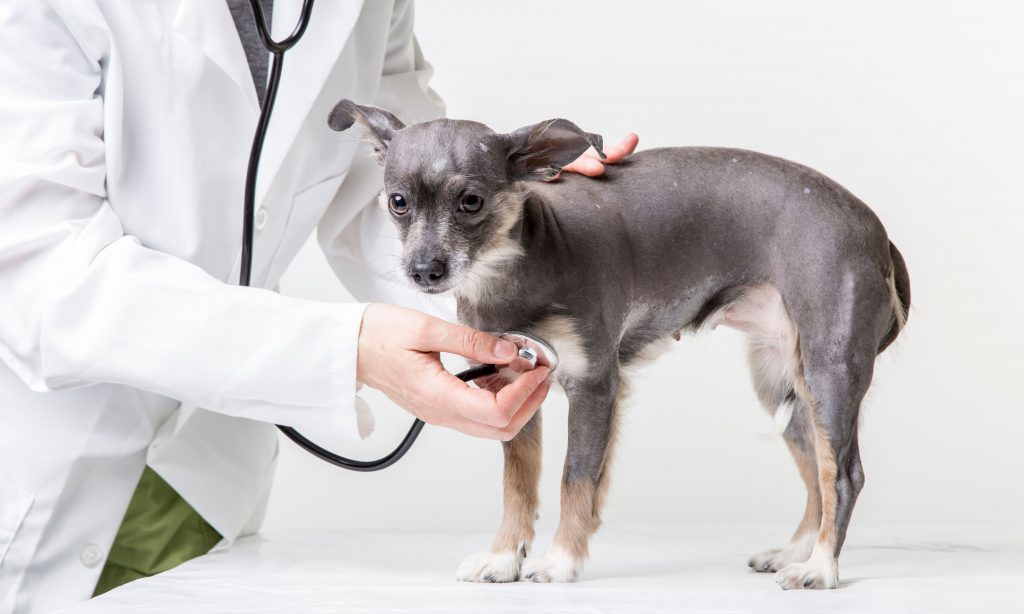The post aims to educate dog parents on the signs to look for when determining if their dog is cold so that they can take the appropriate steps to keep their dog warm and comfortable. Through this blog post, we aim to provide dog parents with a comprehensive understanding of the different signs of a cold dog, including shivering or trembling, whining or barking, hunching or curling up, loss of energy and lethargy, and cold ears and paws. Additionally, we will also provide tips on how to keep a dog warm, such as providing them with a warm sweater or coat and keeping their bedding clean and dry.

Winter is here, and with it comes colder temperatures that can be tough on our furry friends. As dog parents, it’s important to be aware of the signs that your dog is cold and take appropriate steps to keep them warm and comfortable. In this blog post, we’ll discuss the signs to look for when determining if your dog is cold and provide tips on how to keep your dog warm during cold weather.
Shivering and Trembling:
One of the most obvious signs that your dog is cold is shivering or trembling. When dogs get cold, they will try to generate heat by shivering or trembling. This is a clear indication that they are uncomfortable and need to be kept warm.
Whining and Barking:
Another sign that your dog is cold is whining or barking. Dogs may whine or bark when they are cold as a way to communicate their discomfort to their owners. If your dog is whining or barking more than usual, it could be a sign that they are feeling chilly.
Hunching and Curling Up:
Dogs may hunch or curl up in order to conserve heat and protect their vital organs. If you notice your dog hunching or curling up, it’s a sign that they may be cold and trying to stay warm.
Loss of Energy and Lethargy:
Cold temperatures can make dogs feel sluggish and less energetic. If your dog seems less active than usual or is sleeping more than usual, it could be a sign that they are feeling chilly.
Cold Ears and Paws:
Dogs’ ears and paws are often the first body parts to feel the effects of cold temperatures. If they feel cold to the touch, it’s a sign that your dog may be feeling chilly.
Keep Your Dog Warm:
If you notice any of these signs in your dog, it’s important to provide them with a warm and comfortable place to rest, and to keep them active during the day with plenty of play and exercise to keep them warm. Additionally, consider providing them with a warm sweater or coat when they go outside, and be sure to keep their bedding clean and dry.
It’s also important to note that some breeds have thicker coat than others and they may not be as sensitive to cold temperature as other breeds. If you have any doubts, it’s always best to consult with a vet.
It’s also important to remember that dogs that are older, smaller, or have certain health conditions may be more prone to feeling cold, so it’s especially important to keep a close eye on them during cold weather.
By keeping an eye out for these signs and taking appropriate steps to keep your dog warm, you can help ensure that they are comfortable and healthy, even in cold weather. If you have further questions or concerns about how to keep your dog warm during cold weather, please visit our website and chat with us for further advice.
Conclusion:
It’s important to be aware of the signs that your dog is cold and take appropriate steps to keep them warm and comfortable. Shivering and trembling, whining and barking, hunching and curling up, loss of energy and lethargy, and cold ears and paws are all signs that your dog may be feeling chilly. By providing them with a warm and comfortable place to rest, keeping them active, and providing them with a warm sweater or coat, you can help ensure that they are comfortable and healthy even in cold weather. It’s also important to note that certain breeds have thicker coats and may not be as sensitive to cold temperatures as other breeds. If you have any doubts or concerns, it’s always best to consult with a vet. Remember to check the signs of coldness in your dog on regular basis and keep them warm to ensure their well-being.

Frequently Asked Questions:
What are some signs that my dog is cold?
Shivering and trembling, whining and barking, hunching and curling up, loss of energy and lethargy, and cold ears and paws are all signs that your dog may be feeling chilly.
How can I keep my dog warm during cold weather?
Provide them with a warm and comfortable place to rest, keep them active with plenty of play and exercise, and consider providing them with a warm sweater or coat when they go outside. Also, keep their bedding clean and dry.
Are some breeds more prone to feeling cold than others?
Yes, some breeds have thicker coats and may not be as sensitive to cold temperatures as other breeds. If you have any doubts or concerns, it’s always best to consult with a vet.
What should I do if I suspect my dog is cold but I’m not sure?
If you have any doubts or concerns about whether your dog is cold, it’s always best to consult with a vet. They can give you advice on how to keep your dog warm and healthy during cold weather.
Can a dog get hypothermia?
Yes, dogs can get hypothermia just like humans if they are exposed to extremely cold temperatures for an extended period of time. Hypothermia can be life-threatening if not treated immediately. It’s important to take appropriate steps to keep your dog warm and dry during cold weather.
Should I keep my dog outside in cold weather?
No, it’s not recommended to keep your dog outside in cold weather for extended periods of time. Dogs should be kept indoors in a warm, comfortable environment.
How often should I check if my dog is cold?
It’s recommended to check your dog’s signs of coldness regularly during cold weather. This way you can ensure that they are comfortable and healthy.



